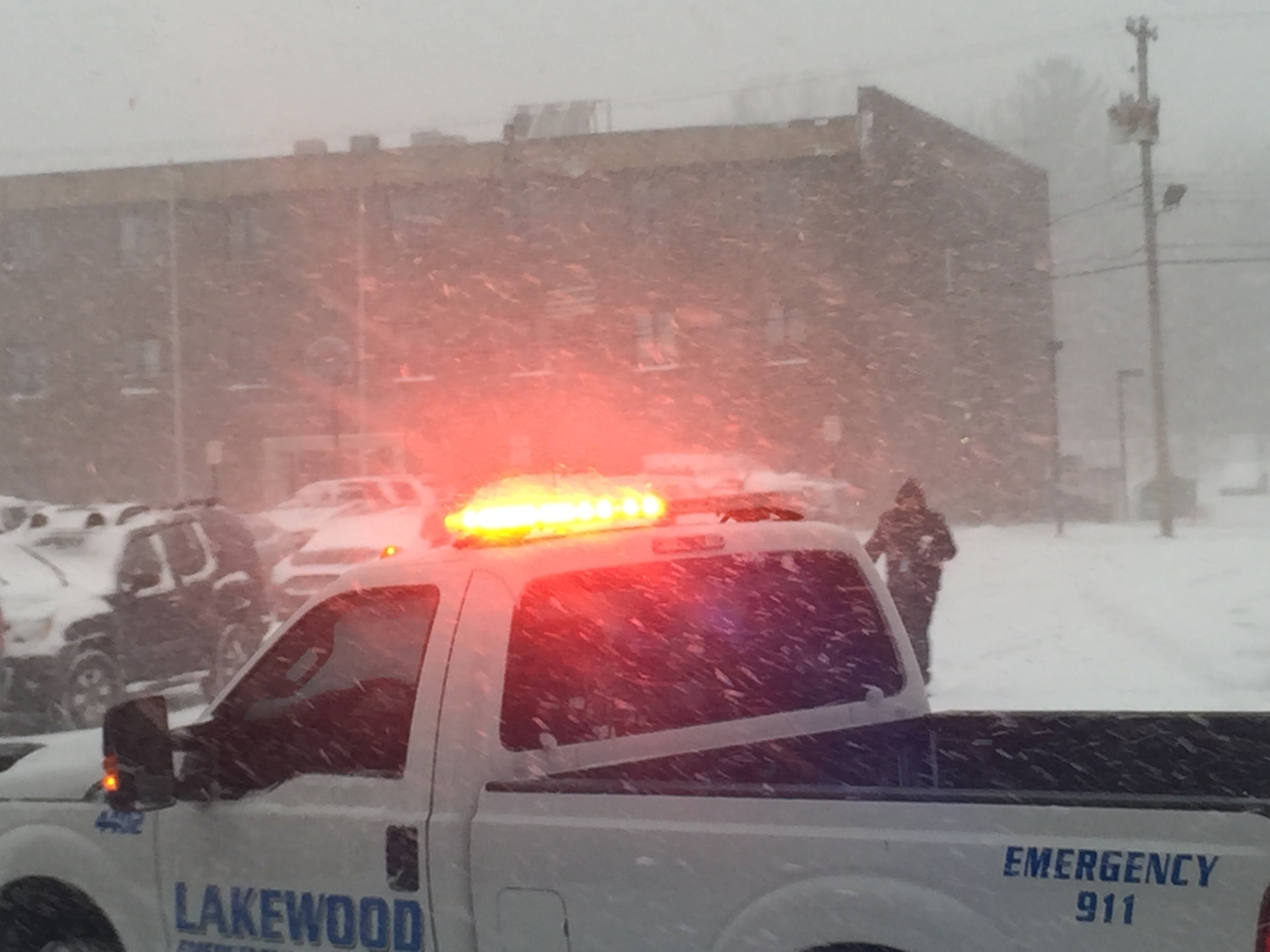Staying Safe During a Winter Storm or Blizzard
- Stay indoors and wear warm clothes. Layers of loose-fitting, lightweight, warm clothing will keep you warmer than a bulky sweater. If you feel too warm, remove layers to avoid sweating; if you feel chilled, add layers.
- Listen to a local station on battery-powered radio or television or to NOAA Weather Radio for updated emergency information.
- Bring your companion animals inside before the storm begins.
- Move other animals to sheltered areas with a supply of non-frozen water. Most animal deaths in winter storms are caused by dehydration.
- Eat regularly. Food provides the body with energy for producing its own heat.
- Keep the body replenished with fluids to prevent dehydration. Drink liquids such as warm broth or juice. Avoid caffeine and alcohol. Caffeine, a stimulant, accelerates the symptoms of hypothermia. Alcohol, such as brandy, is a depressant and hastens the effects of cold on the body. Alcohol also slows circulation and can make you less aware of the effects of cold. Both caffeine and alcohol can cause dehydration.
- Conserve fuel. Winter storms can last for several days, placing great demand on electric, gas, and other fuel distribution systems (fuel oil, propane, etc.). Lower the thermostat to 65° F (18° C) during the day and to 55° F (13° C) at night. Close off unused rooms, and stuff towels or rags in cracks under the doors. Cover the windows at night.
- Check on relatives, neighbors, and friends, particularly if they are elderly or if they live alone.
Staying Safe OutsideIf you must go outside, protect yourself from winter storm hazards:
- Wear layered clothing, mittens or gloves, and a hat. Outer garments should be tightly woven and water repellent. Mittens or gloves and a hat will prevent the loss of body heat.
- Cover your mouth to protect your lungs from severely cold air. Avoid taking deep breaths; minimize talking.
- Watch for signs of hypothermia and frostbite.
- Keep dry. Change wet clothing frequently to prevent a loss of body heat. Wet clothing loses much of its insulating value and transmits heat rapidly away from the body.
- Stretch before you go out. If you go out to shovel snow, do a few stretching exercises to warm up your body. This will reduce your chances of muscle injury.
- Avoid overexertion, such as shoveling heavy snow, pushing a vehicle, or walking in deep snow. The strain from the cold and the hard labor may cause a heart attack. Sweating could lead to a chill and hypothermia.
- Walk carefully on snowy, icy sidewalks. Slips and falls occur frequently in winter weather, resulting in painful and sometimes disabling injuries.
- If you must go out during a winter storm, use public transportation if possible. About 70 percent of winter deaths related to ice and snow occur in automobiles.
- Check your vehicle emergency supplies kit and replenish it if necessary.
- Bring enough of the following for each person:
-
– Blankets or sleeping bags
– Rain gear, extra sets of dry clothing, mittens, socks, and wool hats
– Newspapers for insulation
– Plastic bags for sanitation
– Canned fruit, nuts, and high energy snacks (Include a non-electric can opener if necessary)
– Warm broth in a thermos and several bottles of water
– Keep a cell phone or two-way radio with you. Make sure the battery is charged.
– Plan to travel during daylight and, if possible, take at least one other person with you.
- Let someone know your destination, your route, and when you expect to arrive. If your vehicle gets stuck along the way, help can be sent along your predetermined route.
- Before leaving, listen to weather reports for your area and the areas you will be passing through, or call the state highway patrol for the latest road conditions.
- Be on the lookout for sleet, freezing rain, freezing drizzle, and dense fog, which can make driving very hazardous

